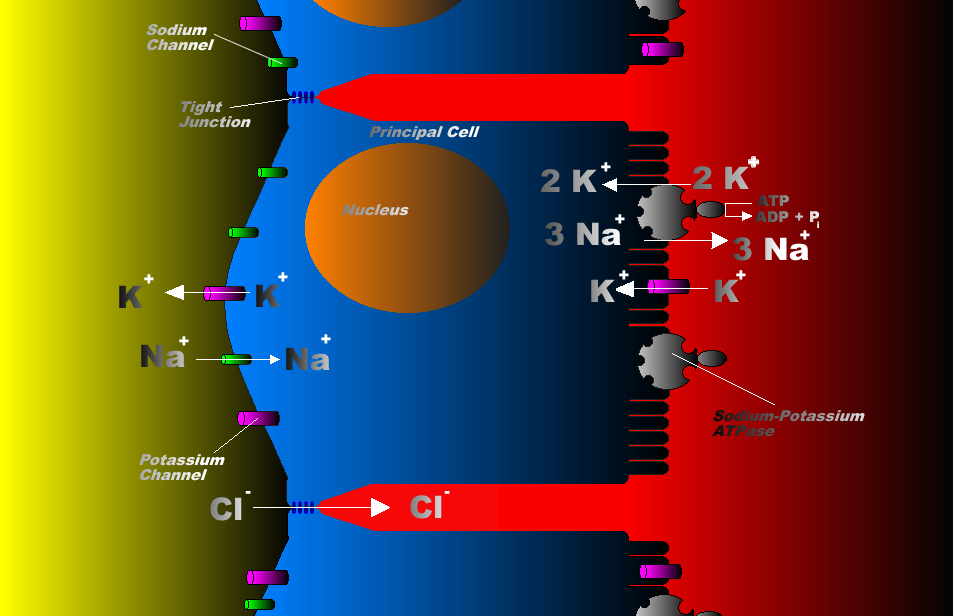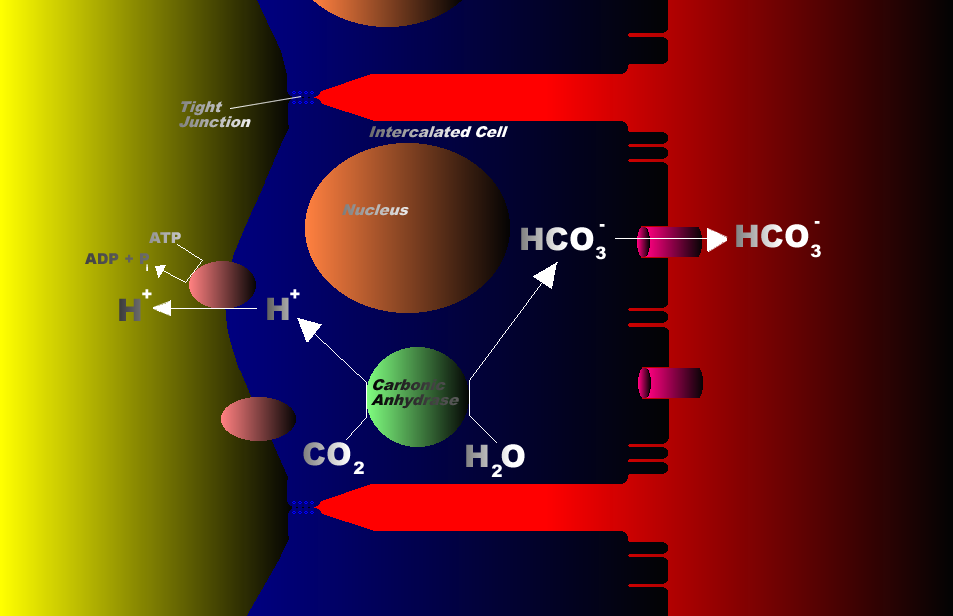|
Medullary Collecting DuctsPhysiology/Transport: Together with the DCT, the
collecting ducts reabsorb about 7% of the filtered NaCl and about 17%
of the total reabsorbed water. The two also secrete different amounts
of K+ and H+. The medullary collecting duct, unlike its cortical counterpart,
is permeable to urea. Its permeability to water, though low, can be
increased by antidiuretic hormone (ADH). The intercalated cells, meanwhile, secrete H+ (reabsorb HCO3-) or secrete HCO3-, thus regulating acid-base balance. They also reabsorb K+.
|
|||||||||||||||||||||||||||||||||||||||||||||||||||||||||||
| Renal Physiology |

